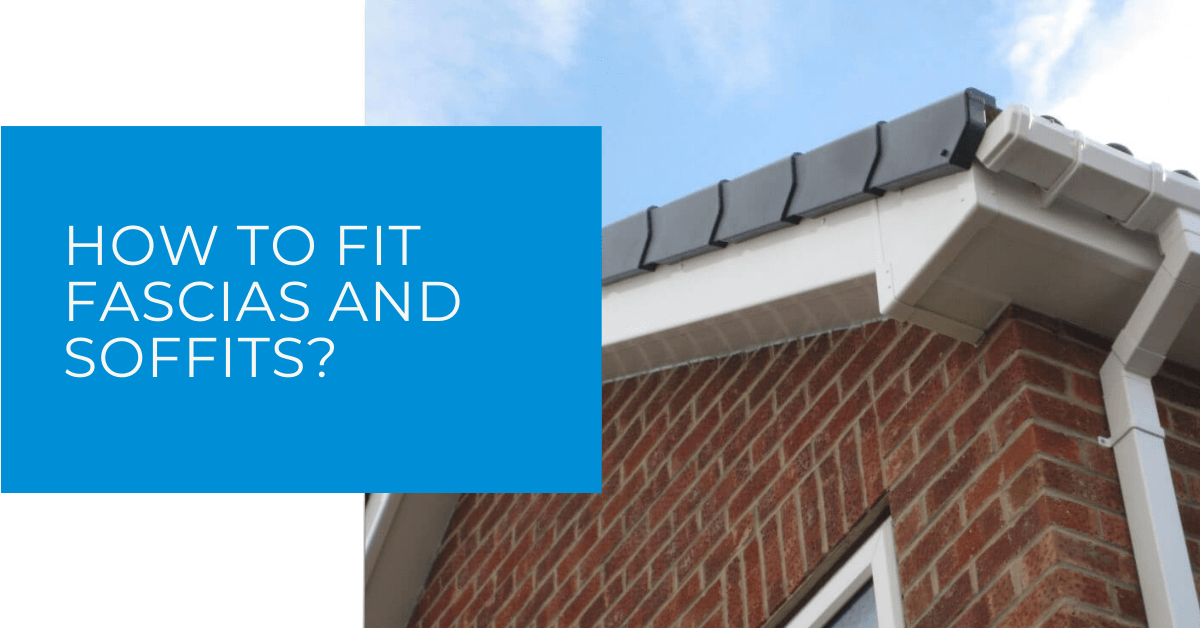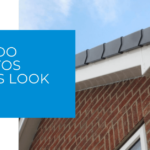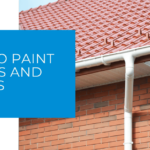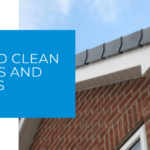If you’re looking for how to fit soffits and fascias, this article is for you. Here we’ll cover how to measure your eaves and how to prepare the fascia board. We’ll also give some useful tips on how to hang fascia boards without damaging them or the wall they’re being fitted against.
Contents
What Tools Will I Need?
- Tape measure
- Hammer
- Drill
- Chisel
- Saw
- Pencil
- Level
- Square
How to Measure the Area
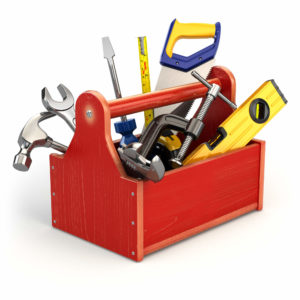 Measuring the eaves is the first step in how to fit soffits and fascias. You need to find out how wide they are, as this will determine the width of the fascia board you need to buy. To do this, measure from the edge of the roof down to where it meets the wall. This distance is your eaves width. If you’re not sure how to do this, get a professional in to do it for you.
Measuring the eaves is the first step in how to fit soffits and fascias. You need to find out how wide they are, as this will determine the width of the fascia board you need to buy. To do this, measure from the edge of the roof down to where it meets the wall. This distance is your eaves width. If you’re not sure how to do this, get a professional in to do it for you.
How to Prepare Fascia Boards
You’ll want to make sure that all of the old nails have been removed because these could cause problems for future installations. To prepare your fascia board for hanging an underlay is recommended if it hasn’t already been done by the manufacturer upon purchase. Doing this step ensures that water won’t get behind the board and cause any damage in the future
Once you know your eave’s width, it’s time to prepare the fascia board. The board should be around 150mm wider than the width of the eaves, so add this to your measurement. If you’re using a wooden fascia board, it’s a good idea to give it a coat of preservative before fitting it.
Now that you have your measurements, it’s time to start drilling and sawing! The first step is to drill pilot holes in the top of the fascia board where you’ll be fixing it to the roof. Use a square and level to make sure these are drilled in straight. Then use a chisel and hammer to knock in some nails – make sure these are also straight! Saw off any excess wood at the bottom of the board so that it fits snugly against the wall.
How to Hang Fascia Boards
One of the most common mistakes people make when hanging fascias is not ensuring that they are level. You can use a spirit level or even a piece of string stretched between two points to help you get this right. If your boards are slightly bowed, it’s best to fit them so that the concave side is facing outwards. This will help to disguise any imperfections in the board itself.
If you’re finding this tricky, get a professional fascia and soffit installer in to do it for you. They will have the tools and experience to do it quickly and efficiently.
How to Cut Your Fascia Board to Size?
There are a few ways that you can go about doing this. You could use a handsaw, jigsaw, or even a circular saw (if you’re careful!). Remember to always wear safety goggles when cutting any kind of material!
How Do I Fix the Fascia Board in Place?
Once you’ve cut your fascia board to size, it’s time to fix it in place. You can do this by drilling pilot holes and then using screws or nails to secure them in place. Make sure that the fascia is level before doing this, otherwise, you’ll end up with an uneven finish.
What If There’s a Gap Between My Eaves and the Top of the Fascia Board?
If there’s a gap between your eaves and the fascias, you can either fill it with some foam insulation or use a trim board to cover it up. This will help to keep out any water or pests that might try to get into your home!
Do I Need to Fit Guttering with Soffits and Fascias?
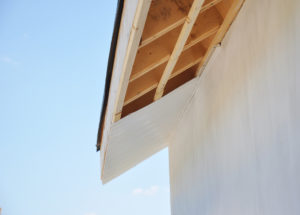 The answer to this question depends on how much water is being collected by your eaves. If there’s a lot of rainfall that drains into the guttering, then you might want to consider fitting it back in its place before installing fascias or soffits. This will help prevent any damage from occurring on your walls!
The answer to this question depends on how much water is being collected by your eaves. If there’s a lot of rainfall that drains into the guttering, then you might want to consider fitting it back in its place before installing fascias or soffits. This will help prevent any damage from occurring on your walls!
If there’s a gap between your eaves and the top of the fascia board, you can either fill it with some foam insulation or use a trim board to cover it up. This will help to keep out any water or pests that might try to get into your home!
Fitting guttering will help to collect any water that’s draining from the roof, and will prevent it from damaging your walls in the future.
If you’re not sure whether or not you need guttering, check how much rainfall your eaves are collecting. If there’s a lot of water getting through, then it might be worth fitting guttering before installing soffits or fascias.
If you’re not confident in doing this yourself, get a professional in to do it.
Which Is the Best Type of Fascia and Soffit Material?
If you’re looking for a really sleek, modern look then aluminium might be your best option. On the other hand, if you want something that looks more traditional, wood will work well too!
There are also plenty of composite materials on the market these days – they come in all shapes and sizes. What’s great about this is how often they boast high levels of durability. Just make sure to check out their warranty details before making any decisions!
Another popular choice among homeowners who don’t have much time on their hands is PVCu fascias or soffits. These can last up to 30 years with very little maintenance and can be easily cleaned with a hose or jet wash. Plus, they come in a range of different colours so you’re sure to find something that suits your home!
There are a few things to take into account when making this decision. Firstly, think about what kind of look you’re going for – traditional or modern? Then, consider how much time (and money) you want to spend on maintaining your fascias and soffits.
Finally, remember to check out the warranty details before buying anything! There are plenty of materials on the market these days, so it’s definitely worth taking your time to find the right one.
Conclusion
Remember to take your time when drilling and sawing – it will help keep you safe. If you’re not confident in doing this yourself, get a professional in to do it for you instead! They will have the tools and experience necessary to complete the job quickly and efficiently. Good luck!

